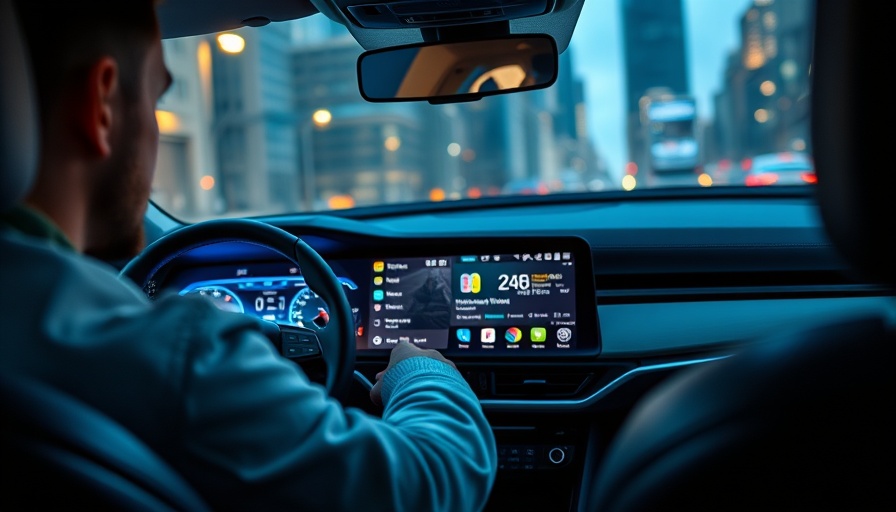
Redefining Infotainment: The Shift in Vehicle Control Mechanics
The automotive landscape is evolving, with complex infotainment systems becoming a focal point of driver experience. As per the J.D. Power 2025 U.S. Initial Quality Study, it's clear that while these systems attract attention with their sleek touchscreens, they pose significant usability challenges for drivers. Owners are increasingly frustrated navigating through layers of screens to access vital functions such as climate control, navigation, and even garage door openers. The pressing question for auto repair shop owners is: how can we bridge the gap between enticing design and practical functionality?
Infotainment Systems: A Double-Edged Sword
The allure of large touchscreens is evident. They enhance aesthetics and provide a modern flair to vehicle interiors. However, as J.D. Power's Frank Hanley noted, these systems often make essential tasks cumbersome. Instead of intuitive controls that allow for quick adjustments while driving, drivers find themselves grappling with complex interfaces—an issue that has been consistently highlighted in consumer feedback. For repair shops, understanding these pain points allows them to better address customer concerns regarding defective functionalities.
The Problematic Rise of Touchscreens
As vehicles become more digital, the integration of technology into everyday functions like controls for heating and climate has resulted in a 'catch-all' drawer scenario. This term aptly reflects how every feature—once operated by physical buttons—is now relegated to a touchscreen, often resulting in driver distraction. The J.D. Power report reveals that infotainment problems currently stand at an alarming 42.6 issues per 100 vehicles, making it the top category for complaints. This makes a strong case for automakers to reconsider the balance of physical and digital controls.
Consumer Frustration: A Call to Action
Auto repair shop owners must recognize that customer frustration with infotainment systems can directly impact service requests and retention. As customers express dissatisfaction over touchscreen navigations, opportunities arise for shop owners to fill the gap—becoming consultants on best practices for vehicle operation or even upgrading systems. Offering services that help customers understand their vehicle’s technology can enhance trust and loyalty.
Improving Vehicle Quality: Insights on Premium vs. Mass Market Brands
The study indicates a disparity in performance between premium and mass-market vehicles, with premium brands facing more defects despite similar design-related complaints. This highlights an opportunity for repair shops to specialize in areas like high-end vehicle maintenance. Offering tailored services can address the specific deficiencies premium brands experience, especially with new model launches that tend to struggle more than carryover models.
Future Trends and Consumer Preferences
With the rise of plug-in hybrid electric vehicles (PHEVs) now reported as the most problematic vehicles, the trend points towards a growing complexity in vehicle electrification. Repair shops should adapt to these shifts, incorporating training for technicians on the unique needs and issues presented by different powertrains. Consumer preferences are also changing; as drivers increasingly use reusable beverage containers, the need for adaptable cupholders has never been more pronounced. This demand opens a discussion for potential innovations in vehicle ergonomics.
In conclusion, while infotainment systems may offer a modern touch to vehicle aesthetics, the challenges they pose cannot be underestimated. As auto repair shop owners navigate this evolving landscape, understanding and responding to consumer frustrations surrounding touchscreen functionalities can transform these challenges into business opportunities. Enhancing customer service and adaptation to their evolving needs is paramount for future success.
 Add Row
Add Row  Add
Add 




Write A Comment